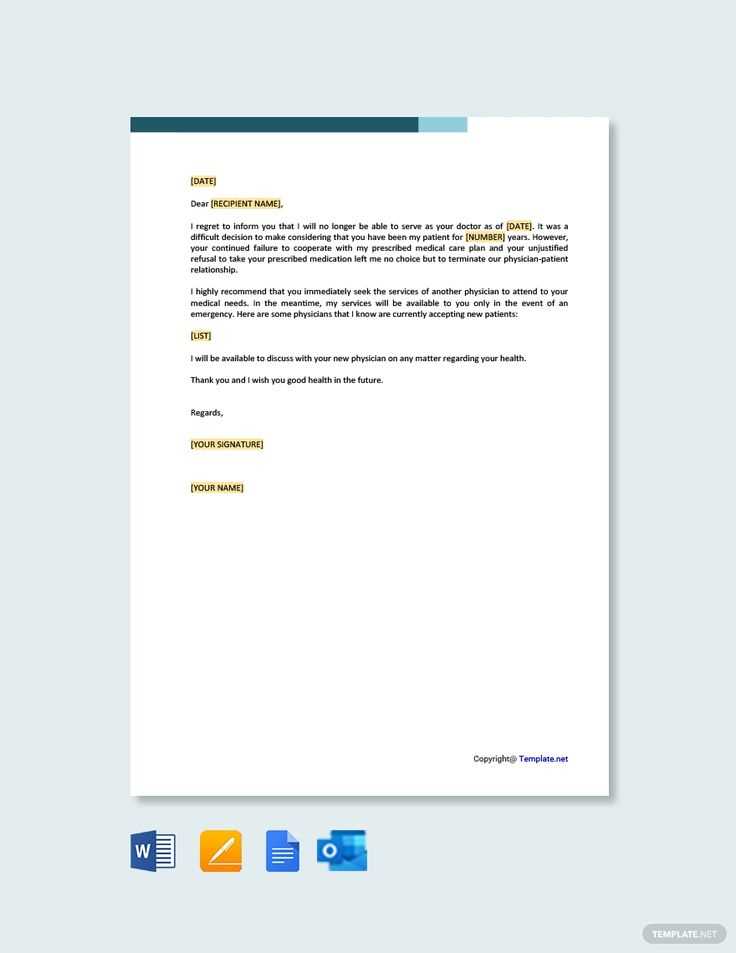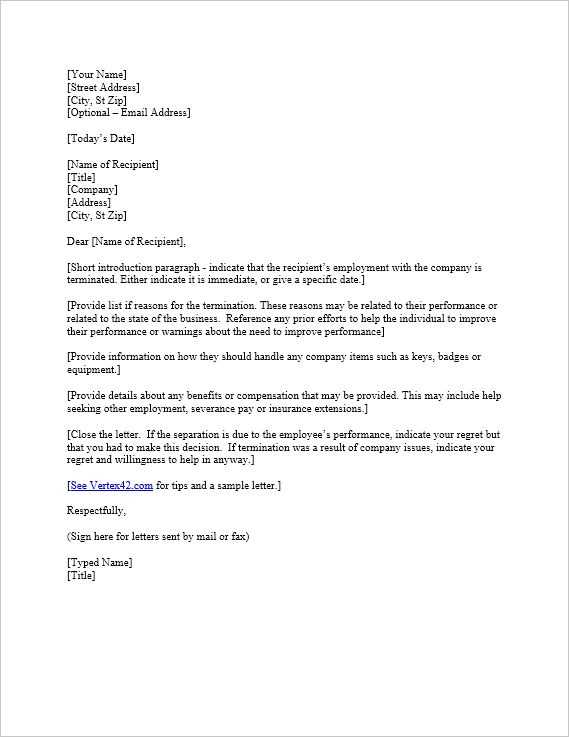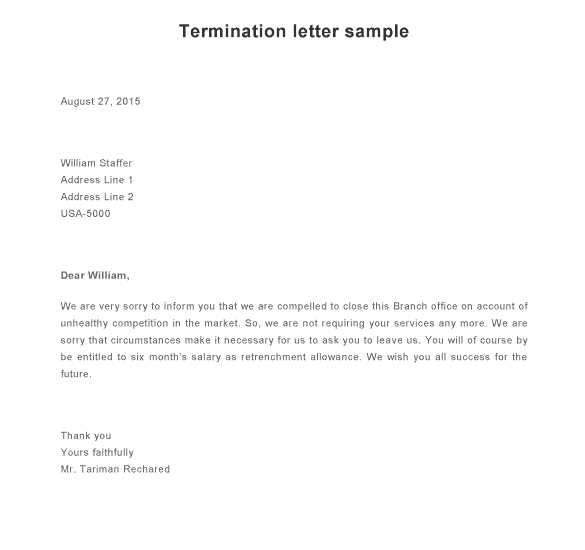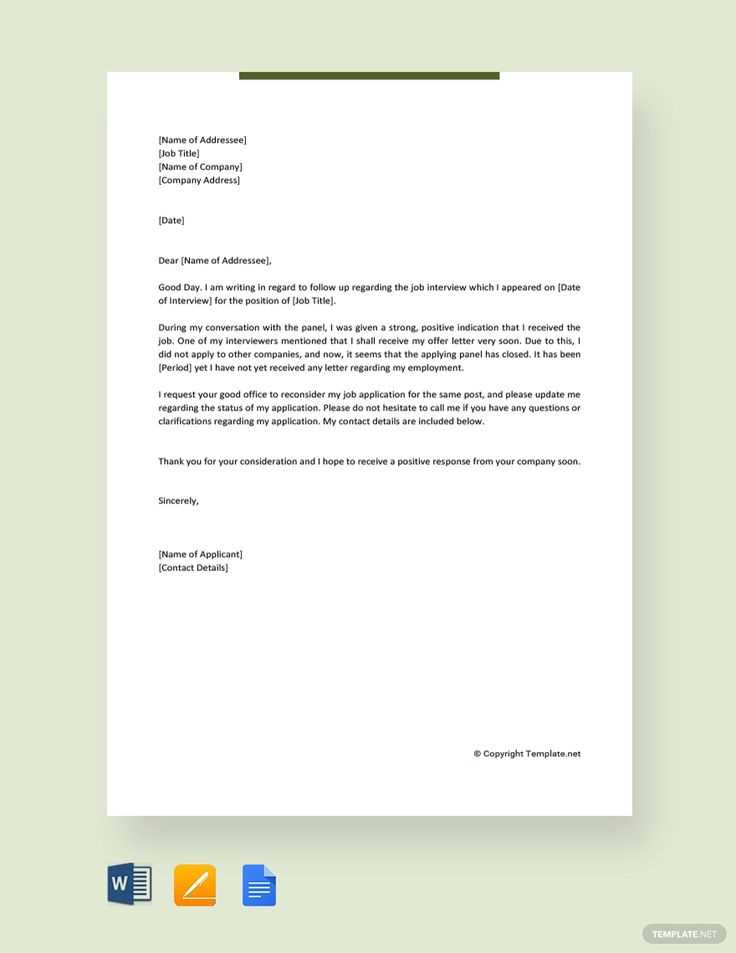Patient Termination Letter Template for Healthcare Professionals

When healthcare providers need to discontinue their professional relationship with an individual, it is crucial to handle the communication in a clear, respectful, and legally sound manner. Crafting an effective message that ensures both parties understand the decision and any subsequent steps is essential. This communication serves as an official way to end the collaboration, outlining the reason for the change and offering any necessary guidance for future care.
Essential Components of the Communication

A well-structured communication should include several key details to make the message clear and thorough. Below are the fundamental elements to consider:
- Reason for Discontinuation: Be transparent about the cause for the end of the professional relationship, whether it’s due to the patient’s behavior, non-compliance, or other factors.
- Transition Plan: Provide information about the next steps, such as referrals to other practitioners or assistance with transferring records.
- Legal Considerations: Ensure that the communication adheres to any legal or regulatory requirements, including notice periods or specific language needed to protect both parties’ interests.
- Professional Tone: Maintain a neutral, respectful, and professional tone throughout the correspondence to avoid misunderstandings or negative reactions.
Creating a Respectful and Clear Message

While it is important to communicate the necessary information, the tone of the message should be carefully chosen. A professional approach that shows understanding and empathy can help ease the transition. It’s advisable to keep the language simple, straightforward, and free of unnecessary legal jargon. This ensures that the recipient will easily understand the key points of the message without feeling alienated or confused.
Addressing Sensitive Situations
In some cases, the reasons for discontinuing the professional relationship may involve sensitive issues. It is crucial to address these matters delicately, balancing transparency with tact. If possible, offer to discuss the situation further in person or over the phone to provide more context and support for the decision.
Final Thoughts on Effective Communication

Ending a professional relationship is never easy, but handling it thoughtfully and responsibly can help minimize the impact on both parties. By ensuring the communication is clear, respectful, and legally compliant, healthcare providers can maintain professionalism and avoid unnecessary complications while facilitating a smooth transition for the individual involved.
Creating a Clear Discontinuation Notice
Understanding the Need for Formal Communication
Key Elements to Include in the Document
Guidelines for Professional Tone and Style
Common Mistakes to Avoid in Documents
Ensuring Legal Compliance and Requirements
Handling Sensitive Issues in Writing
Effective Communication After the Process
When ending a professional healthcare relationship, it is important to craft a clear and respectful document that ensures all involved parties are informed and aware of the necessary steps. The message should be precise and structured to avoid misunderstandings. Properly handling such communication reflects professionalism and helps maintain the integrity of both the healthcare provider and the individual.
Key Details to Include in the Communication
To make the document clear and effective, certain details should always be included. The reason for ending the relationship should be explained concisely. Additionally, offering guidance on how the person can move forward, whether through referrals or alternative support, is essential. Providing an outline of the next steps and what the individual should expect will help facilitate a smoother transition.
Guidelines for Maintaining Professionalism
Using a professional tone is critical. Even when delivering a difficult message, the language should remain neutral and respectful. Avoiding overly harsh or judgmental language will ensure that the recipient does not feel attacked or misunderstood. The goal is to communicate the necessary information while maintaining a cordial and professional atmosphere.
Avoiding Common Pitfalls
In the process of crafting a formal communication, it is easy to make common mistakes that could lead to confusion or legal complications. One frequent error is failing to include all necessary details, which can leave the recipient uncertain about the next steps. Additionally, unclear language or ambiguity about the reasons for the decision can result in misunderstandings. Ensuring transparency and thoroughness is key.
Ensuring Compliance with Legal Standards
It’s important to be aware of the legal requirements that govern professional relationships. In some cases, specific language or procedures must be followed to comply with healthcare regulations. Failing to do so could lead to complications or potential liabilities. A well-crafted message will always adhere to the relevant legal framework, ensuring both parties’ rights are protected.
Addressing Sensitive Topics with Care
When discontinuing a professional relationship, there may be sensitive issues involved, such as personal behavior or performance. These matters must be handled delicately. Offering a private discussion or explaining the circumstances with understanding can help ease the situation. Providing a clear, reasoned explanation shows empathy and maintains respect throughout the process.
Maintaining Open Communication Post-Discontinuation
After the decision has been communicated, it’s important to offer continued support if necessary. Whether it’s providing resources for future care or simply being available for follow-up questions, staying accessible ensures that the person affected is not left without support. Effective communication doesn’t end with the initial notice, but should extend into helping the person navigate the transition.